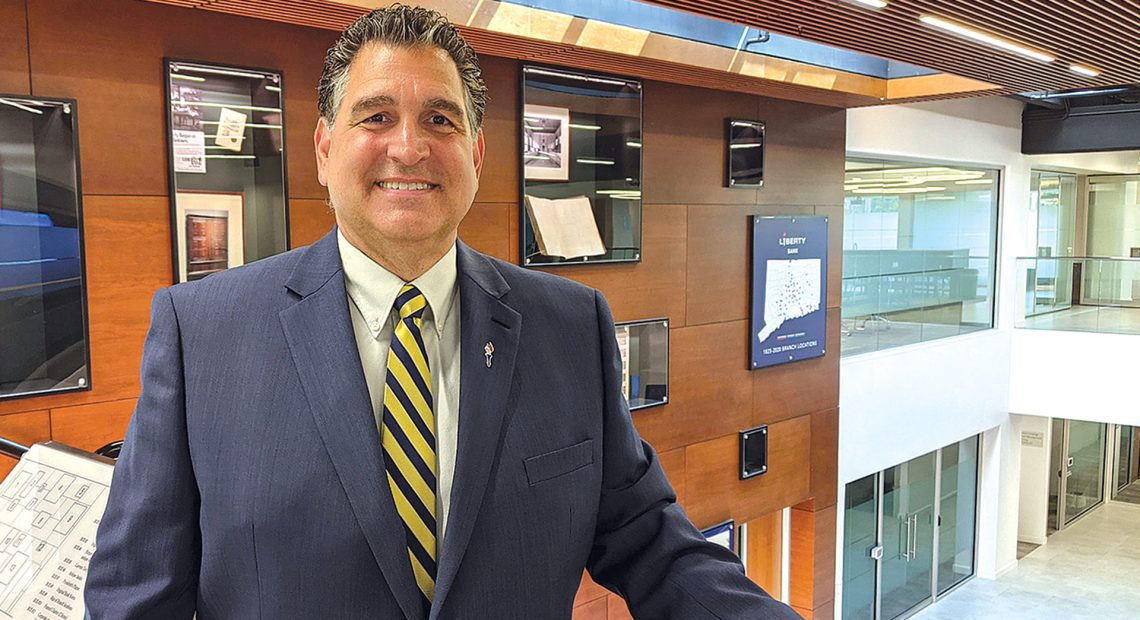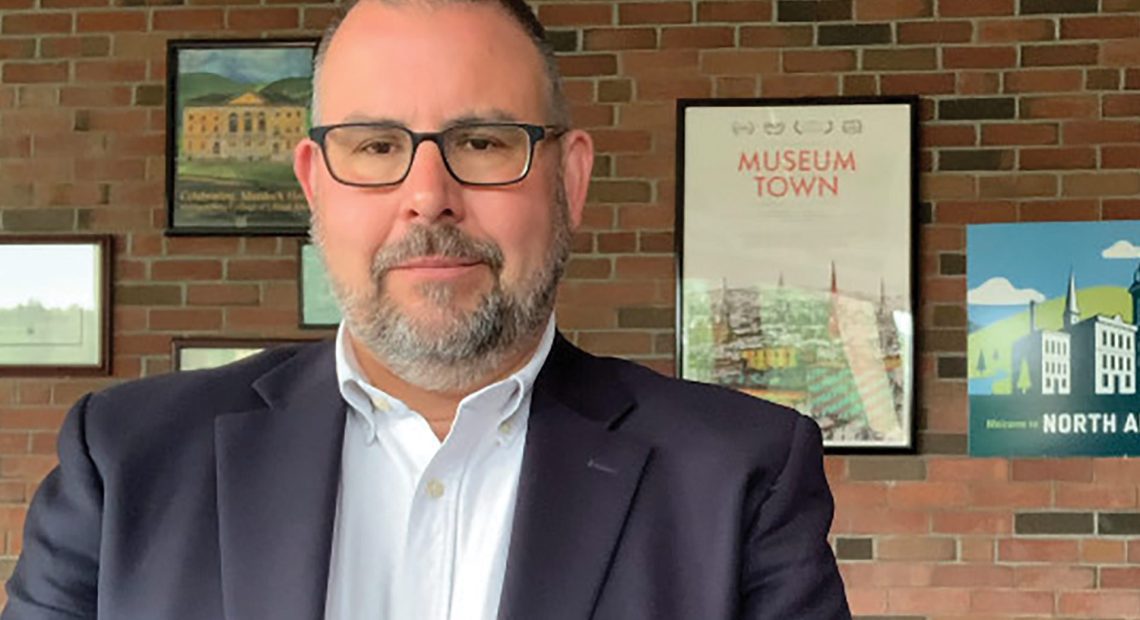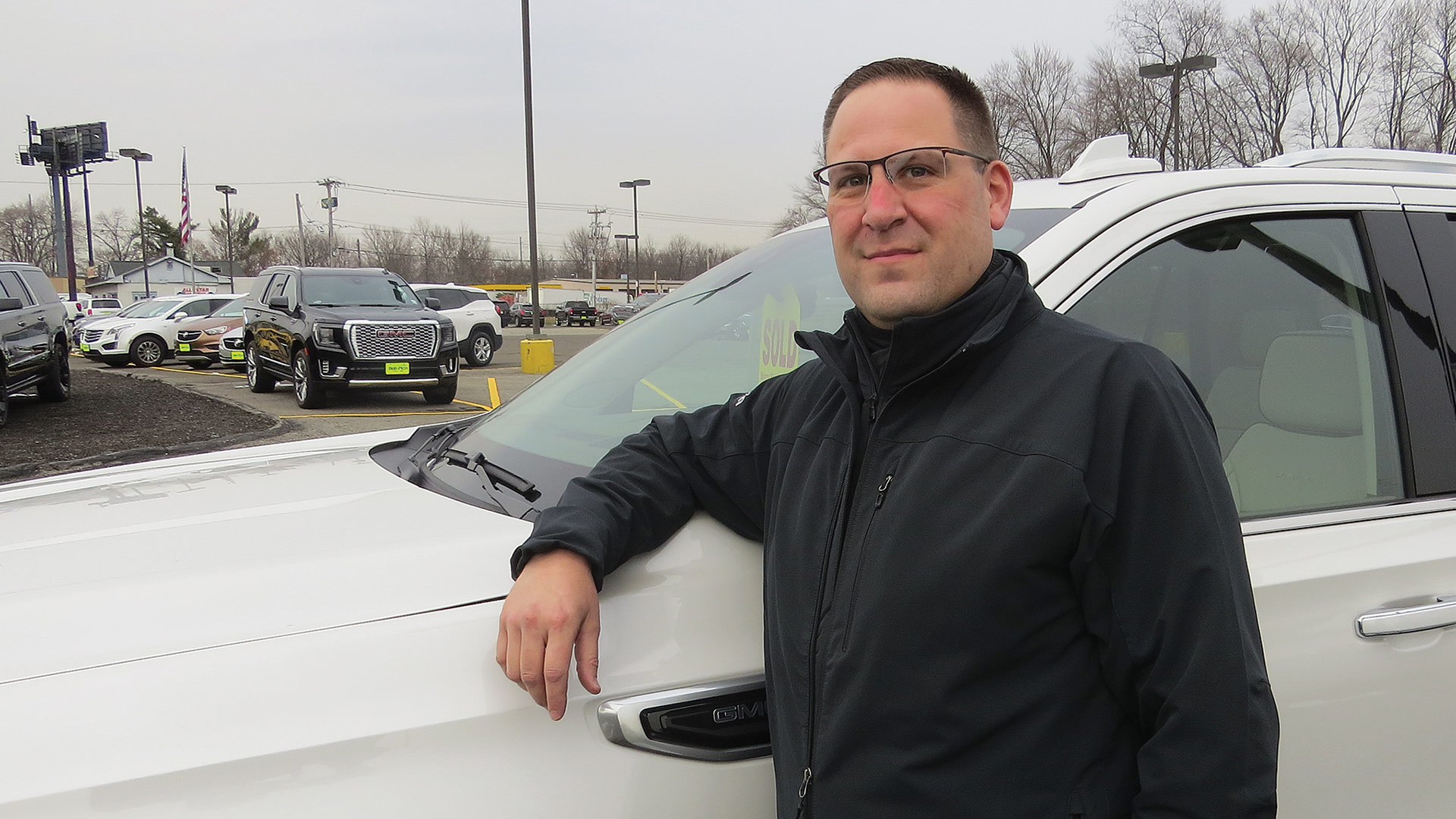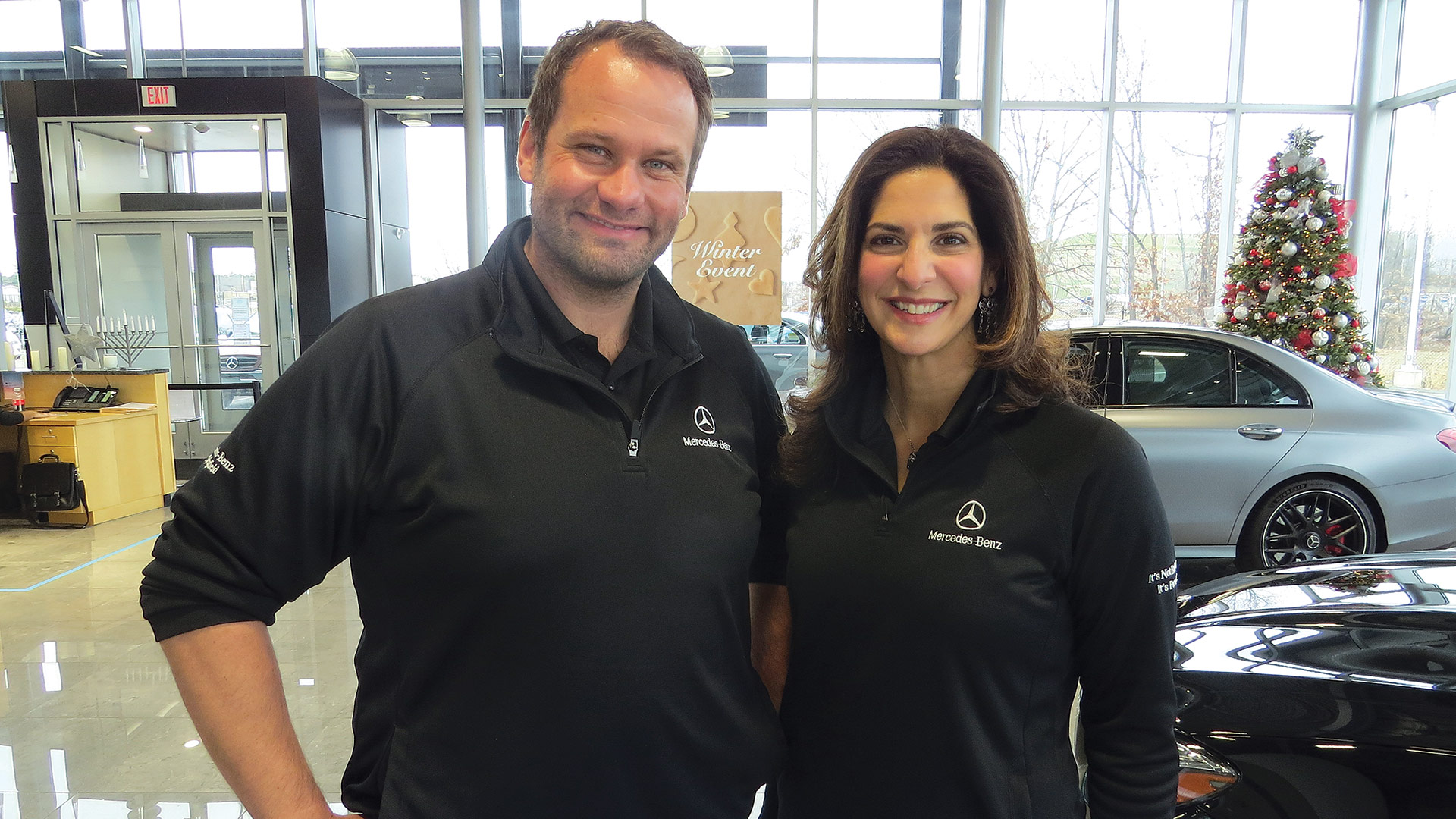Seeking a Return

Paul Scully says customers are feeling more optimistic about the future.
While year one of the pandemic taught banks how to constantly pivot — to remote work, new modes of serving customers, and multiple phases of PPP loans — year two has brought more stability, even normalcy, but also new challenges, particularly inflation and supply-chain disruption that has made it more difficult for customers to save, borrow, and invest. That they’re doing all these things, to some degree, lends a healthy sense of optimism to 2022.
There’s nothing wrong with normalcy, Paul Scully said.
And if nothing else, the business of banking in 2021 was more stable than in 2020. That doesn’t mean all the economic issues individuals and businesses are dealing with have gone away, just that banks, and businesses in general, had to do less pivoting. Or at least have learned to roll with the punches.
“With vaccination rates increasing — or at least the availability of vaccinations up — we saw business picking up and customers feeling more confident coming into the banking centers,” said Scully, president and CEO of Country Bank. “And with commercial business picking up, people were feeling a little more optimistic with what the future has in store for them — where 2020 was all about trying to figure out what the heck was going on.”
What was going on last year were the early throes of a pandemic with no vaccines available, widespread shutdowns of economic activity, and banks more involved in PPP loans than normal commercial activity. “But we started to see, probably by the second quarter of this year, a normalizing, with customers feeling more confident and feeling more optimistic about the future and for their business.”
“With commercial business picking up, people were feeling a little more optimistic with what the future has in store for them — where 2020 was all about trying to figure out what the heck was going on.”
That’s a positive trend for commercial lending. Glenn Welch, president and CEO of Freedom Credit Union, was on an economic-outlook call with Visa recently, which projected a 7% uptick in 2022 in business investments in fixed assets, which means more borrowing. “That’s pretty healthy growth,” he told BusinessWest. “People are looking to borrow out there. Corporations’ financial statements are looking pretty strong the last couple of years, and a lot of consumers are sitting in pretty good financial shape; we’ll see whether they want to pull the trigger or not.”
On the consumer side, they have, with 2021 being the second straight year of double-digit growth on the mortgage-lending side at Freedom, along with healthy business in auto and home-equity loans. “And last year, deposits were up over 20%; this year, it was 10%. Our balance sheet, like many institutions, has grown pretty significantly since COVID hit.”
Tony Liberopoulos, Liberty Bank’s senior vice president and regional manager for Commercial Banking, said the bank’s new commercial-lending push in Western Mass. — it opened a loan-production office in East Longmeadow in June and has added three more employees since then — has gone well.
“We’ve been very happy. We had a very strong year; we’ve been very busy,” he told BusinessWest, noting that much of that success can be attributed to customers craving normalcy — in this case, face-to-face dealings with a stable team.
“With the amount of market disruption between mergers, community lenders leaving their jobs for other opportunities, and, in many instances, competitors still working from home, we’ve had opportunities to meet prospects and clients to grow our business,” he explained.

Tony Liberopoulos says borrowers want access to digital tools, but mainly prefer face-to-face interactions.
“We’re firm believers that, while businesses have been struggling with things like COVID and supply chains, things will bounce back,” he went on. “And we’re seeing a lot of opportunities just by being in front of the clients. They want to see familiar faces; they don’t want to deal with just Webex and phone calls.”
Liberty’s lending numbers have borne that out, with 2021 figures close to what they were pre-COVID, Liberopoulos added. “That’s all we can ask for at this point. We’ve found customers and prospects still want face-to-face meetings; they want a normal relationship with banks.”
With that in mind, “I think the trend is toward more confidence in 2022 than there was in 2021,” he went on. “I think companies have seen their business come back since late May, early June, when a lot of COVID restrictions were lifted. We’re seeing businesses thrive again, and now they’re starting to invest in 2022. That’s what we’re counting on.”
Into the Digital Age
While many customers do, indeed, prefer to bank in person, Scully said, one of the big industry stories of the pandemic was how customers who had avoided digital banking options embraced them when they had to — and then stuck with them.
“More and more people developed a comfort level with technology,” he explained. “Many had a fear of the unknown — ‘will my money be safe?’ But the last 20 months allowed people to recalibrate a little bit, and we’re seeing more and more reliance on technology, which is great.”
Country even converted a small branch in the Ware Walmart to an interactive banking office with two interactive teller machines (ITMs). “They can absolutely do anything on the machine. The customer response has been really positive.”
Technology has helped banks in other ways — including combating a workforce shortage that has affected every industry and has not spared banks and credit unions.
“The fact that there aren’t a lot of employable people out there is taking its toll on businesses. Anyone in a customer-service business is looking for people; it doesn’t matter whether if you’re running a bank or a local coffee shop.”
“Honestly, it doesn’t matter what business you’re in these days, the fact that there aren’t a lot of employable people out there is taking its toll on businesses. Anyone in a customer-service business is looking for people; it doesn’t matter whether if you’re running a bank or a local coffee shop.
“But that customer expectation still exists for us, so technology has helped quite a bit,” Scully went on. “Customers during the pandemic became more familiar with doing their banking through technology, and their reduced reliance on coming into the branch reduced some of our traffic.”
At Country, while the banking centers operate five or six days a week with in-person staff, in the back-office areas, employees remain on a hybrid schedule, three days in the office, two remote — with Wednesdays mandatory for everyone to come in. “That’s more of a cultural thing for us, so folks would still be connected to one another.”
And the hybrid model has worked well, he noted. “We recognized early on, as we started to look at the reopening process, there are a lot of benefits to having a hybrid workforce. It’s like 2020 allowed us all to recalibrate, and ask why you’re spending an hour twice a day commuting to the office just to do work you were able to do at home for a year. We decided, ‘let’s rethink this.’”
Staffing has also been a challenge for Freedom, Welch said, which had to close down a branch or revert to drive-up only on occasion to deal with it.

Glenn Welch says workforce issues have not only affected staffing for banks and credit unions, but have begun to put pressure on wages.
“We’ve seen other institutions have the same issue. We’re certainly trying to hire people, but it’s been difficult. People leave, and it’s hard to get people interested in coming in and working. I don’t know if it’s because it’s a retail environment — that’s where most of our openings are, in branches — or it’s just people retiring or finding other things they want to do.”
The crunch has started to put pressure on wages, Welch added, which not only affects the banks themselves, but often doesn’t do enough to balance surging inflation for those earning the paychecks.
Liberopoulos said the shift toward digital banking options is a good one, and even though many of his commercial clients have wanted to do business in person, they, too, also want to be able to access the same digital experience — with its speed, flexibility, and personalization — that consumer clients have.
“Innovation is always the key to growth and sustainability. To survive, you need to invest not only in talent, but in products and services,” he said, noting that there’s certainly a need for both online options and a bricks-and-mortar presence.
Back to the Street
Communities and nonprofits saw their needs soar during the pandemic, too, and that’s one area community banks and credit unions continued to focus on in 2021. For example, over the summer, Country Bank — which has traditionally focused its giving on basic needs like food insecurity, homelessness, and healthcare — donated a total of $1 million to two regional food banks.
“To be a healthy community, residents in the community need to be in good health. Nutrition should be a right and not a privilege,” Scully said, noting that needs became more dire due to the pandemic, job losses, inflation, and an increase in addiction.
“If you have a heartbeat, you enjoy giving back, and it doesn’t have to be a certain size,” he said, turning the topic around as a challenge to others. “You may be able to donate only a dozen boxes of pasta, but that’s a dozen more boxes of pasta available for someone in need. What we like to do is partner with organizations and get their stories out there, so other people can jump on the bandwagon and be a part of it too.”
That speaks to Liberty’s priorities as well, Liberopoulos said. “We’re very in tune with our community and helping out the non-for-profits; we’ve done a lot of good things so far and continue to do that. That’s very important to us. We live, work, and lend in this area, and we want to support this area as well.”
Welch said Freedom has not only supported nonprofits, but gotten others involved by choosing a charity each month — A Bed for Every Child, the Walk to End Alzheimer’s, and Unify Against Bullying are just three recent examples — and involving members in the giving.
“We have been advertising that on our website and trying to get donations not only from the credit union, but from members who find the causes worthwhile and have the ability to donate,” he explained.
As for member business in the coming year, Welch knows inflation remains a drain on savings and assumes interest rates will rise at some point in an attempt to slow it down. “That could have an impact on people being able to borrow. Student-loan payments are starting up again, too, so people will have $300 or $400 coming out of their pocket for that in addition to increased prices and increased rates.”
These are problems that affect businesses, too, Scully said.
“With inflation and the cost of goods going up, and so many businesses looking at inflated utility expenses, now, with the shortage of qualified, available help, payroll tends to go up as well,” he noted. “Clearly there are a lot of challenges for folks in the business arena — which is why you really want to encourage people to shop local and keep Main Street storefronts occupied.”
Many businesses struggling with higher costs are still looking to borrow and invest, he added. While the PPP loans of 2020 were about keeping the lights on and keeping employees paid, for more traditional loans going forward, borrowers need to show a continuation of revenue streams without the PPP revenue to bolster them.
“For the most part, that’s exactly what happened. Businesses have returned to a good level,” Scully said. “Certainly, some are still taking their hits — hospitality was one of the hardest-hit, whether it’s food services, hotels, or entertainment venues. They had tough restrictions put on them last year. Those restrictions were lifted for the most part, but now they can’t rehire enough workers.”
These are all factors that might cause individuals and businesses to pull back from borrowing, he added.
“What will the impact of inflation be? When will interest rates start to rise a little? The big piece that looms for me is employment: where is the workforce going to be? Will there be enough employable people for all of the jobs? We’ve heard about this Great Resignation. It’s real.”
Still, like other financial leaders we’ve spoken with recently, Scully remains optimistic. “All indications suggest 2022 should be an OK year from a business perspective.”
Joseph Bednar can be reached at [email protected]












